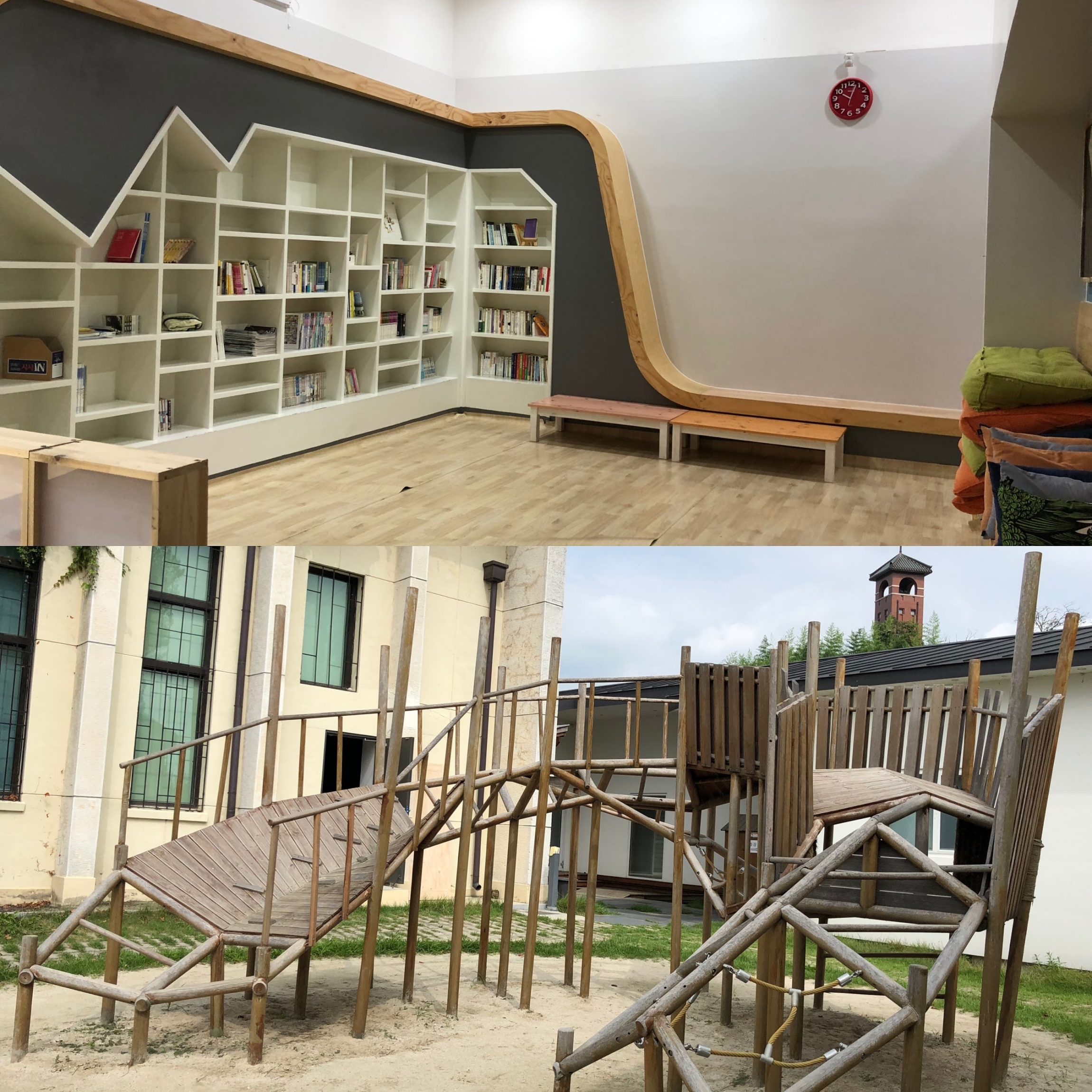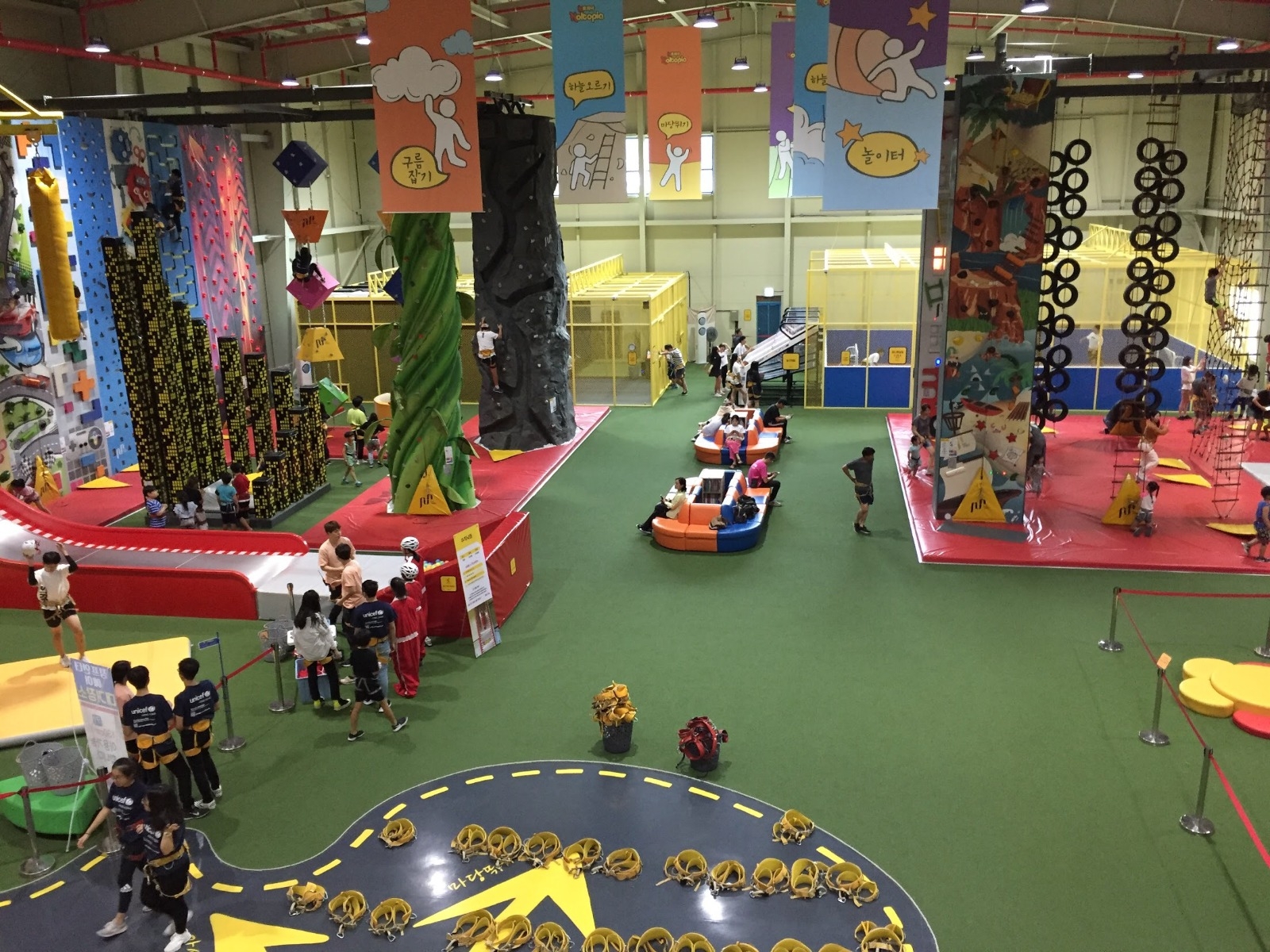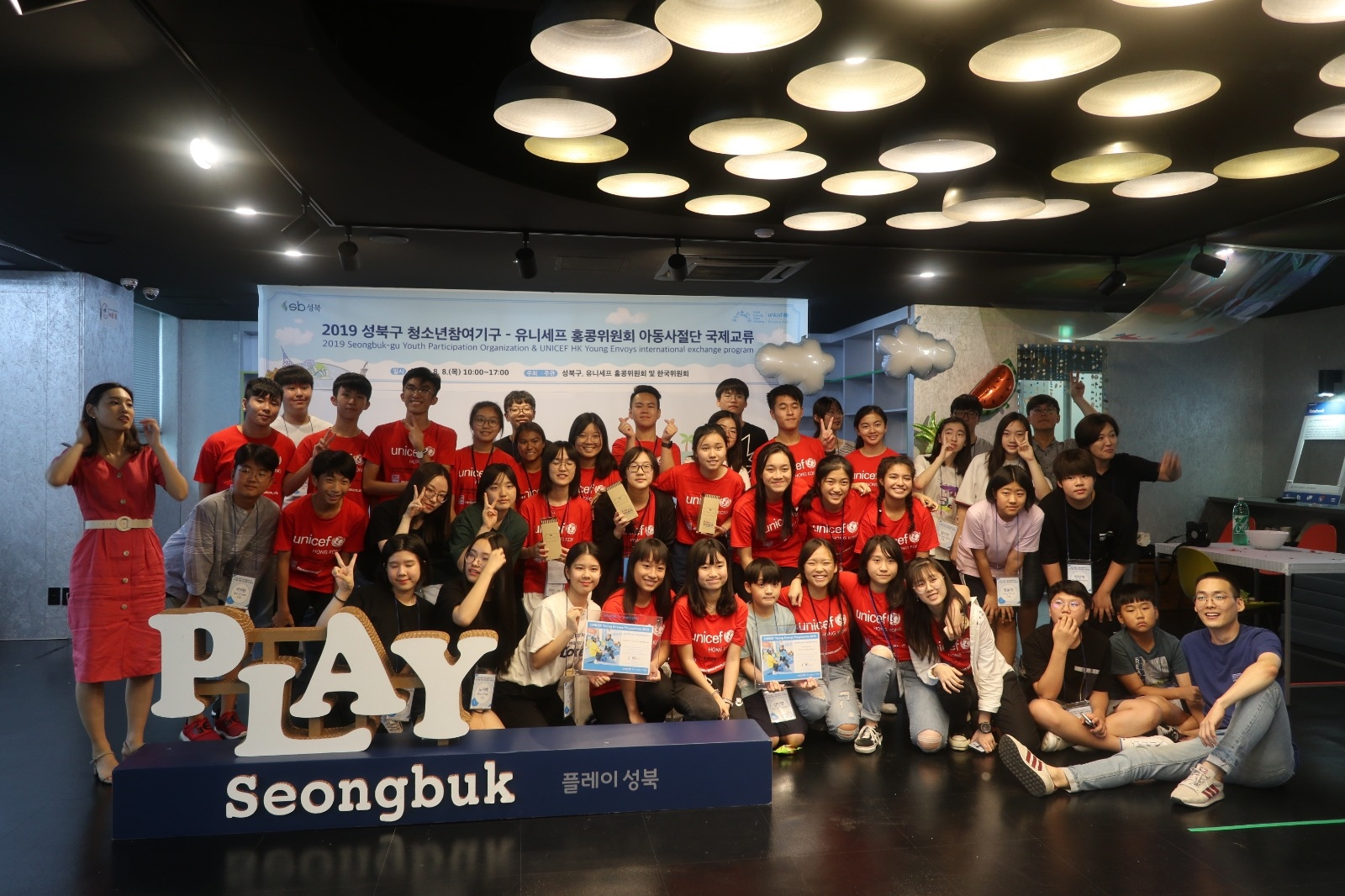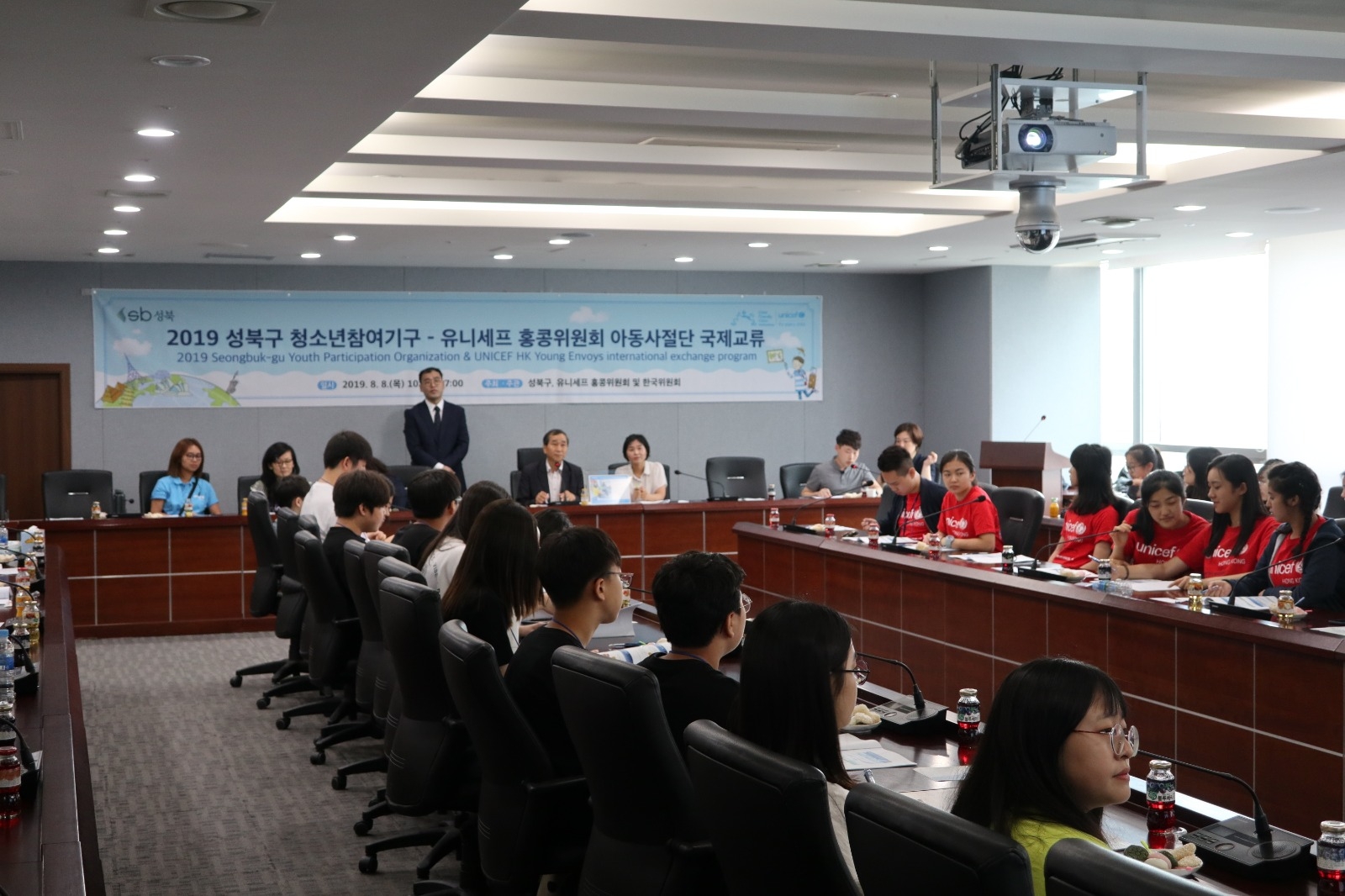 返回
返回
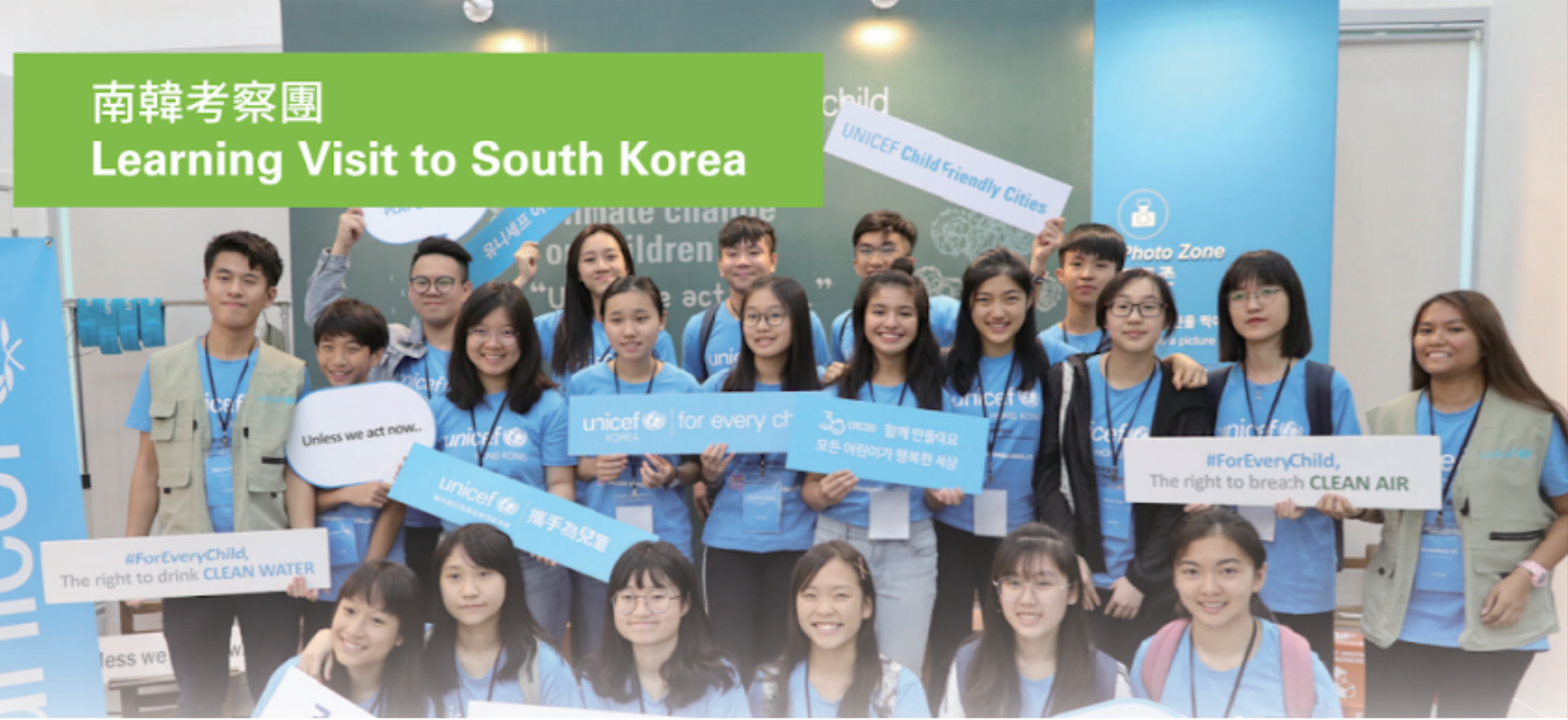
在是次考察團中,我們到訪了南韓其中兩個獲得兒童友好認證的城市 (CFCI) 中,分別是城北區和完州。在這兩個兒童友好城市中,它們均有設立兒童委員會。
UNICEF Korea採用了10項CFCI原則,形成了CFCI的總體框架,包括:
- 兒童參與
- 兒童友好的法律制度
- 全市實踐兒童權利的策略
- 專門的兒童權利組織
- 兒童影響評估
- 為兒童提供足夠預算
- 定期的兒童報告
- 推廣兒童權利,讓市民都能認識
- 提倡兒童權利的非政府機構
- 安全環境
然而,建立一個成功的CFCI,最重要的是「兒童參與」。
為何韓國政府願意推展CFCI計劃?
CFCI能在韓國取得了巨大成功,因為許多市長都認為這是一個非常有吸引力的概念, 並以行動支持這種想法,表明他們願意致力在各個城市表達對兒童的友好和重視,以發展自己和城市的正面形象。人口也是CFCI快速發展的重要因素,由於出生率極低且人口老齡化,城市渴望吸引有孩子的年輕家庭移居該地,以保持當地的活力及人口平衡。
兒童友好城市:南韓城北區
城北是韓國首個兒童友好城市。它設有兒童參與委員會,並分為兒童委員會(11-12歲)及青少年委員會(13-18歲),委員們均為城北區居民或學生。兒童委員會由55個兒童組成,而任期為一年。青少年委員會則由21個兒童組成,他們任期同樣為一年。
兒童友好城市:南韓完州
完州兒童理事會的成立是由兒童討論和當地政府共同決定。2019年,兒童大會有18名理事會成員,青年大會有20名理事會成員。不同年齡組別的理事會成員將會參加理事會會議,討論在完州發生關於兒童政策的問題。在討論之後,他們將建議交給當地政府並與成年人進一步討論,為動議作準備。在完州,每個人都可以成為理事會成員,為社會作出重要貢獻。他們的建議涉及各式各樣的兒童問題。例如2018年完州兒童委員會有四項主要工作,包括:於公共廁所內設置適合兒童高度使用的掛物勾、遞交防止在學校附近發生交通意外的附件、建設適合年輕人的樹屋(休憩空間)和設置在巴士站的碳纖維自動熱能座椅。兒童議員認為,兒童友好型的城市是兒童可以快樂舒適地生活的地方。他們提出的想法都是為了提高兒童的生活質素,使他們的生活更方便和容易使用。
青年使者如是看:兒童友好城市計劃能否應用在香港?
我們認為香港可以仿照韓國 CFCI 的實行方法,例如可先由一至兩個區議會發起作為試點,在較小範圍內嘗試組織兒童議會,給予兒童參與權和決策權,讓兒童決定居住地的友善設施。例 如幼稚園至小學的兒童可能期望享用更多不同類型的康樂設施,如足球場、室內運動場等。而中學生則更期望增加寬敞的自修室數目,擁有一個舒適安靜的場所進行學習,此舉有望成功幫助到一些身處劏房,渴望學習空間卻無計可施的兒童。試點成功後,相信會引起政府及社會各界的關注,提升辨識度後獲得更多的資助,屆時 UNICEF 便可將由點到面拓展出去,令全 港各區都可實踐。我們都希望更多兒童能參與其中,共同建設一個更適合兒童居住的友好城市。
In the learning visit, we visited two cities that received the Child Friendly Cities Initiatives (CFCI) certification in the Republic of Korea. They were the Seongbuk-gu and Wanju. In these CFCI, they all have a children's council.
The Korean Committee for UNICEF (UNICEF Korea) has adopted 10 CFCI building blocks, which have formed the overarching framework for a child-friendly city, they are:
- Children's participation
- A child-friendly legal framework
- A city-wide children's rights strategy
- A children's rights unit or coordinating mechanism
- Child impact assessment and evaluation
- A children's budget
- A regular State of the City's Children report
- Making children's rights known
- Independent advocacy for children
- A safe physical environment
However, the most important of building a successful CFCI is child participation.
Why does The Korea Government willing to join CFCI?
CFCI has met with great success in the country as many mayors have found it a very attractive concept. They have endorsed the approach as a way to demonstrate their commitment to making their city child-friendly and henceforth develop a positive image for themselves and the city. Demographics is also an important factor in the rapid development of the initiative. With a very low birth rate and an ageing population, cities are eager to be attractive to young families with children in order to preserve local dynamism and population balance.
Child Friendly City: Seongbuk-gu, South Korea
As the first child friendly city in Korea, Seongbuk-gu has two children participating councils, they are the Children Council (for 11-12-year-old children) and the Youth Council (for 13-18-year-old children). All members in the councils are local citizens or students of Seongbuk-gu. For the Children Council, they are formed by 55 children and the term of office is one year. For the Youth Council, they are formed by 21 children. The term of office I one year too.
Child Friendly City: Wanju, South Korea
The establishment of the Children Council was the result of the deliberations between the children and the local government. In 2019, there are 18 council members in the Child Assembly and 20 council members in the Youth Assembly. Council members in different age groups would join certain council assembly meetings and discuss issues related to children’s policy in Wanju. After the discussion, they have to present their proposals to the local government and engage in further discussions with adults in order to move forward with their motions. In Wanju, everyone can be a council member and make a contribution to society. Their proposals are about all kinds of issues relating to children. For instance, in 2018, there were four major areas of work that the Wanju Children Council focused on. They were: installing height appropriate clothes hangers for children in public toilets, submitting suggestions to prevent traffic accidents around schools, setting up a leisure place for youth (treehouse) and installing self-warming carbon seats at bus stops. The child councillors think that a child-friendly city is a place where children can live happily and comfortably.
Can the CFCI model apply and be implemented in Hong Kong?
We thought that Hong Kong could learn from Korea about how they implement CFCI. For example, the government could start a pilot project by forming a children council within one or two district councils, so as to provide an opportunity for children to participate and make decisions. This could also let the children choose the friendly facilities in their living places. For example, kindergarten and primary school students might want to enjoy different recreational facilities, such as football courts, indoor playgrounds, etc. And students from secondary schools might hope to increase the number of self-study rooms so that they could have a quiet place to learn and study. This way, we could possibly help those children living in subdivided flats to have a space for learning. Once the trial was complete, we thought it would attract the government and the public’s attention, where more funding could be made available after knowing more about the project. Afterwards, UNICEF could expand and implement it in all districts in Hong Kong. We hope more children could take part in and build a better and friendlier city for children.
